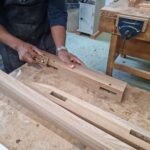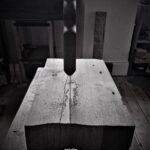As I mentioned in an earlier post, I began woodworking in early 2018, with a beginner’s spoon carving kit bought for me by a loved one who sought to help me find a hobby that might help me better navigate my mental health struggles. Working in my 2nd Floor flat in Hull I spent several happy months learning and practicing the rudiments of carving, making spoons, spatulas and a few bowls:
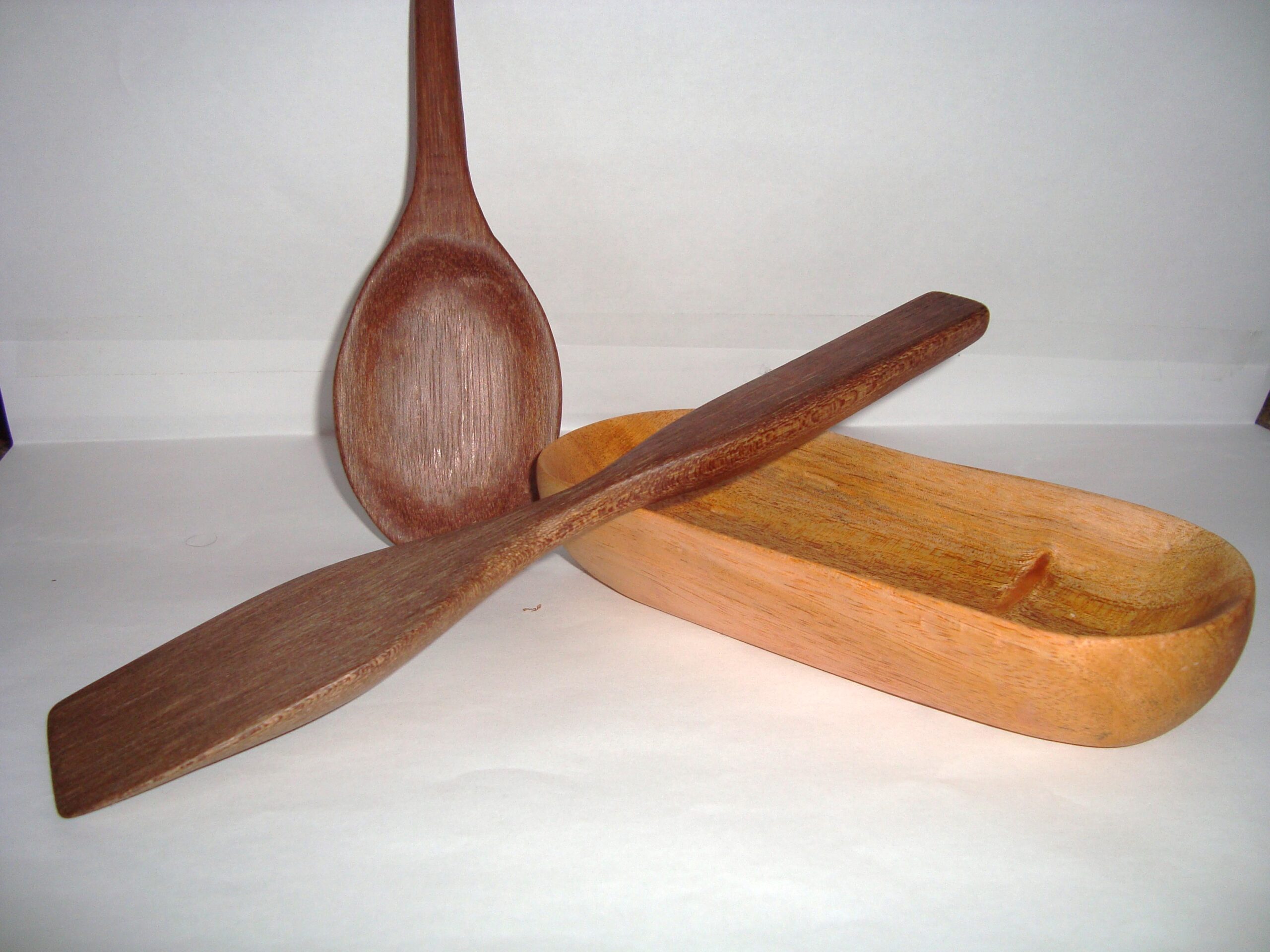
I thoroughly enjoyed this carving and shaping, and the benefits to my mental health were immediate and huge. The things I made brought me joy, and some of them I still use in my kitchen. But…
But there was something missing for me, something magical. I never really experienced carving as being a magical process, and as I watched more craftspeople making furniture on Youtube I was increasingly drawn to hand cut joinery as possibly being the kind of sorcery that I yearned for.
By the time the joinery started on what would become the wooden elements of the Spirit Case I had a little over four years of experience of cutting joints, and had developed a certain aptitude for mortice and tenons, lapped joints, multiple rebated, dadoed, and grooved variations and dovetails. I had, however, worked only by hand on a small workbench in the corner of a flat, and I had always worked on quite a small scale. The size of the Spirit Case was intimidating, and in addition to the space that working in the Grassmarket afforded me it was the advice, support and encouragement of Jon, Campbell and Mustapha that made it possible for me to begin.
Campbell was particularly invaluable, offering design advice and inspiration that elevated my somewhat conservative plans for the main carcass of the piece. I knew that I wanted to dovetail it together, but he encouraged me to consider the rhythm and spacing of the upper dovetails and to incorporate a ‘houndstooth’ pattern within the central tail, a technique that I had never attempted before.
Using a set of dividers I began to design various layouts on paper:
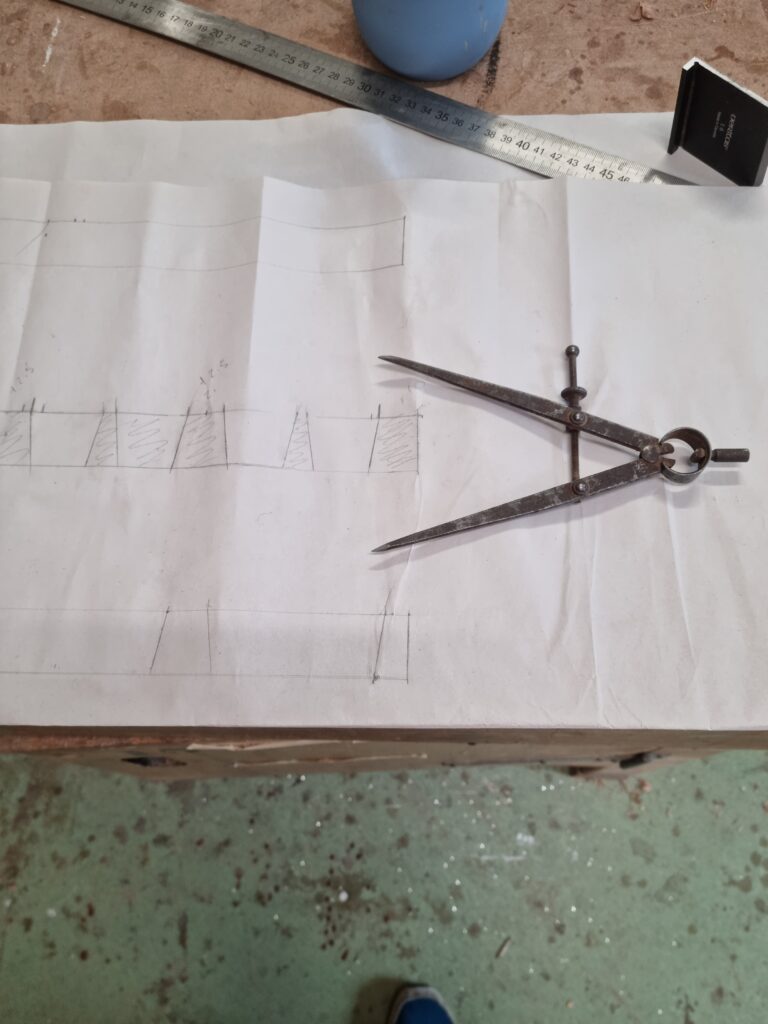
These designs could then be held to the panels until I found a design that looked pleasing, and felt appropriate to the scale and materials:
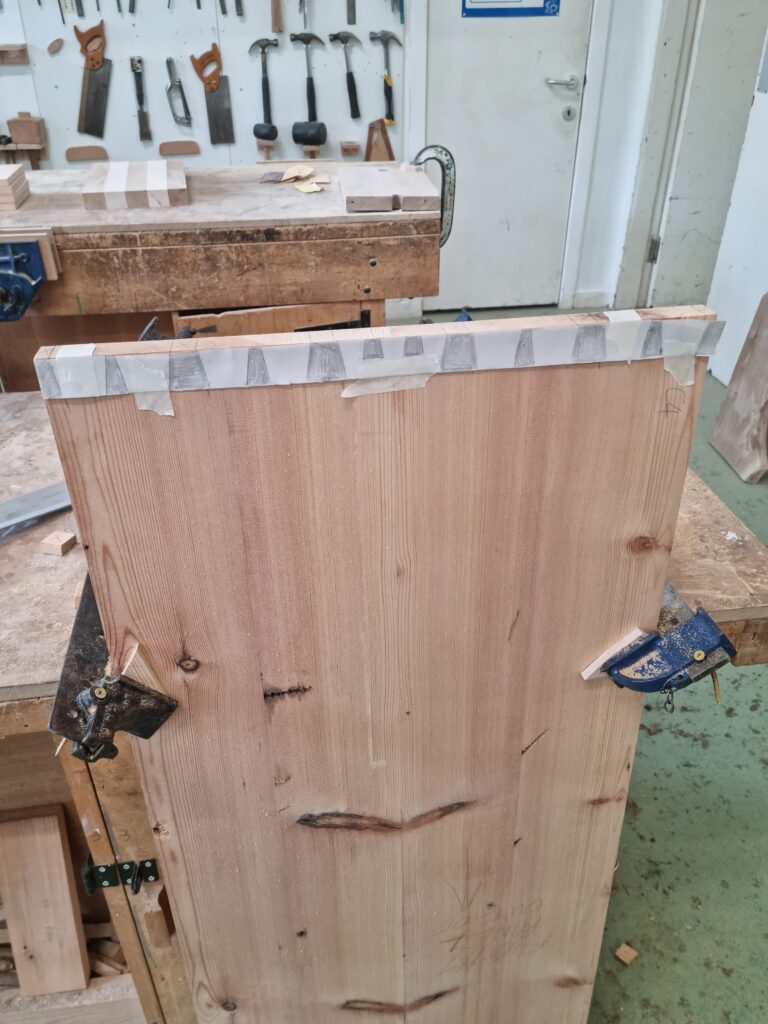
I then transferred the design to the panels and, alongside Mustapha, began to use saw and chisel to cut and refine the tails on the vertical panels:
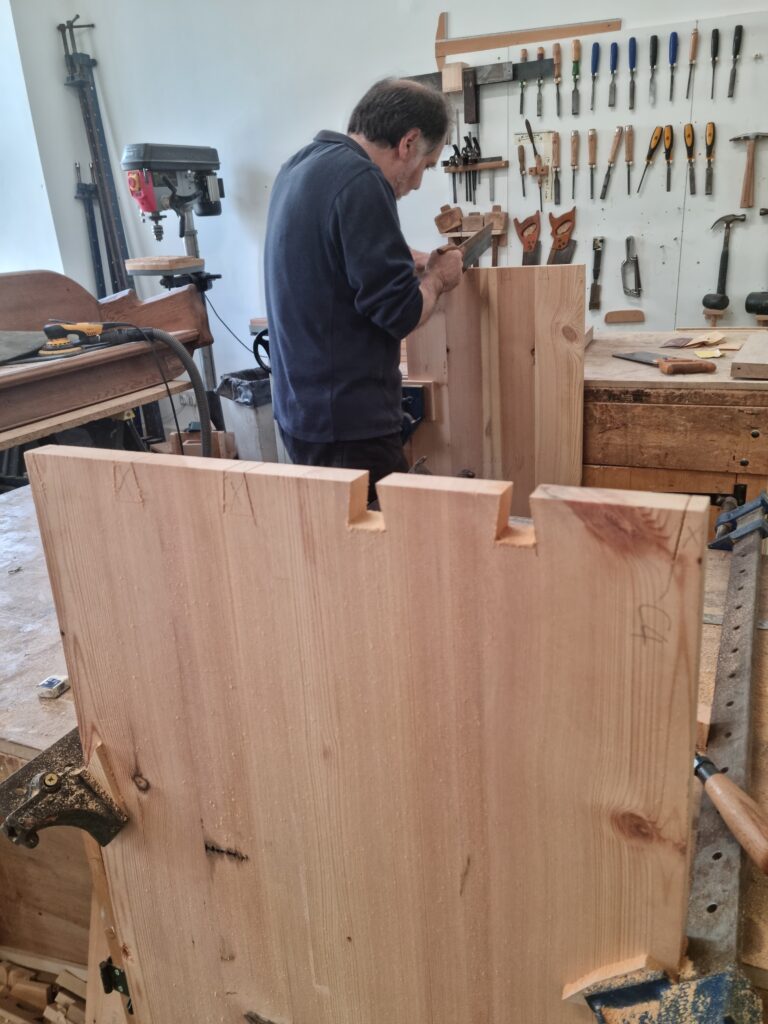
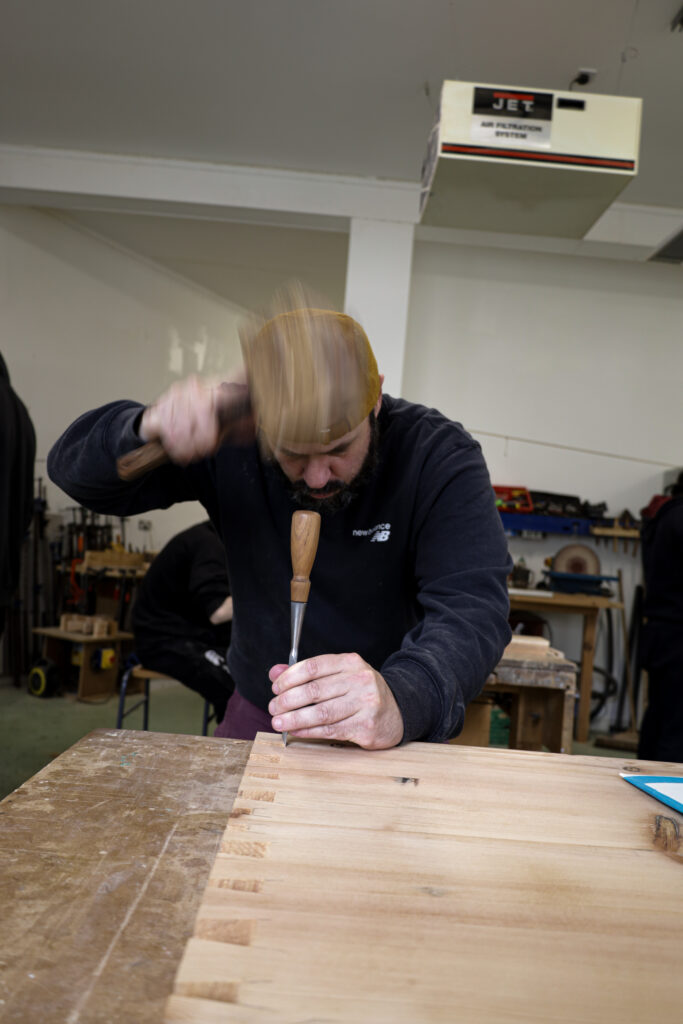
Once cut these were then transferred to the horizontal panels to enable us to cut the sockets into which they would fit:
 And with that we had a carcass, the four-sided basis for cabinetry and, in more general terms, boxes. Dovetails often end up being seen as the stars of the woodworking show, a marker of aptitude and distinguishing feature of quality work. They were not, however, the most complicated and time-consuming joinery task on the Spirit Case. That honour would be taken by the lattice that we would go on to fit within carcass, onto which the slates would later to fixed.
And with that we had a carcass, the four-sided basis for cabinetry and, in more general terms, boxes. Dovetails often end up being seen as the stars of the woodworking show, a marker of aptitude and distinguishing feature of quality work. They were not, however, the most complicated and time-consuming joinery task on the Spirit Case. That honour would be taken by the lattice that we would go on to fit within carcass, onto which the slates would later to fixed.


